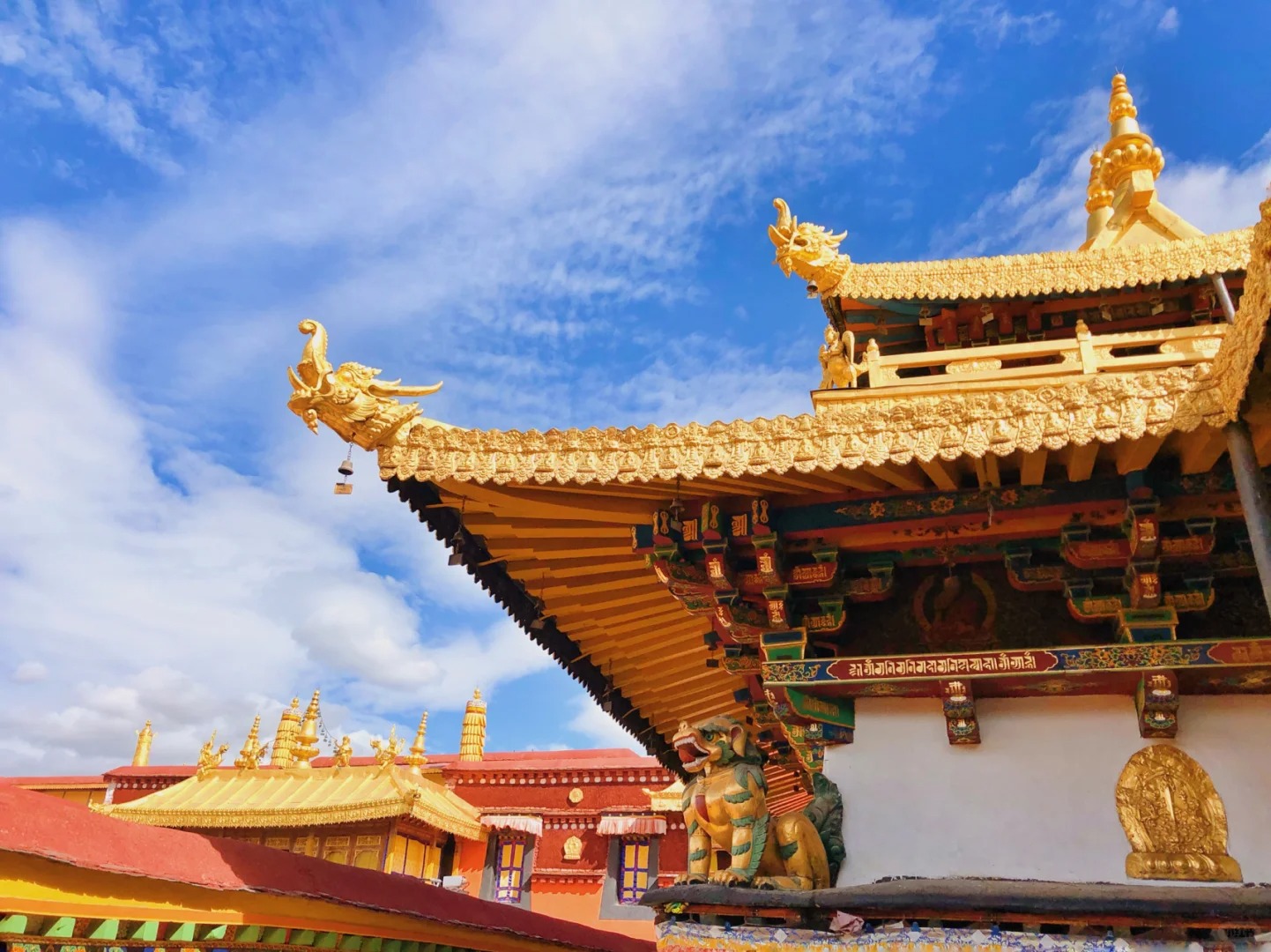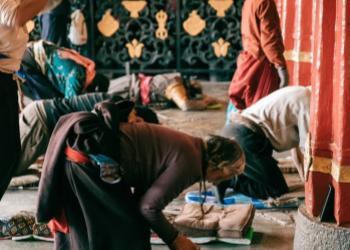Jokhang Temple, located in the center of Lhasa, is a collection of significant temples of various schools of Tibetan Buddhism. It is famous for its unique architectural style, colorful murals, and precious cultural relics. The architectural features of the Jokhang Temple are mainly influenced by the Yellow and White religions of Tibetan Buddhism, while also incorporating cultural elements from Indian Buddhism, Nepal, and Chinese Yuan Dynasty art. Some people believe that if you have never visited the Jokhang Temple, you have not truly experienced Lhasa.
In 2000, Jokhang Temple was listed on the World Cultural Heritage List by UNESCO as an extension project of Potala Palace, and in 2013, it was rated as a national 5A scenic spot, which is the second 5A scenic spot in Tibet.


The Internal Structure of Jokhang Temple
The first thing you see when Jokhang Temple enters is the main entrance of the main shrine, which is located in the east. There are huge Buddha statues on the left and right sides of the main hall. On the right side of the entrance of the main hall passage is a mural about the story of the Jokhang Temple building. Jokhang Temple is divided into three floors, and the biggest attraction is the Buddha statue such as Sakyamuni on the first floor. The eaves of the second and third floors of the main hall, show the architectural styles of Nepal and India.
Layout around Jokhang Temple
The circle around the Sakyamuni Buddha Hall in the center of Jokhang Temple is called "Nangkhor", the circle around the outer wall of Jokhang Temple is called "Barkhor", and the street radiated from Jokhang Temple is called "Barkhor Street". Taking Jokhang Temple as the center, a large circle including Potala Palace, Yaowang Mountain and Ramoche Temple is called "Lingkhor".
Cultural Relics in Jokhang Temple
In Jokhang Temple, you can see exquisite carvings and murals everywhere, and some of them have been 1400 years. There are also Tibetan murals with a length of nearly 1,000 meters, "Princess Wencheng Entering Tibet" and "Jokhang Temple Construction Map". The most famous cultural relic in the temple should be the 12-year-old Buddha statue of Sakyamuni, which is precious not only because of its historical value and cultural relic value but also because it is considered that there is no difference from the Buddha seen 2500 years ago.


Features
Chinese Name: Da Zhao Si(大昭寺)
Location: Lhasa
Travel Information
Opening Hours:12:00-18:30 throughout the year
Tickets Price: CNY 85
Tour Route: Enter the main hall from the gate, visit the small halls in turn, then enter the main Sakyamuni Hall in Jokhang Temple, and then visit the small halls in turn after coming out; After a circle, it is suggested to repeat it along the original route, this time to see various statues in the center of the main hall. If you enter Jokhang Temple in the morning, you can visit the second floor of the main hall. After you come out, you can go up the stairs in the southwest corner of the yard to Jinding, overlooking Jokhang Temple Square.
Transportation: In a sense, Jokhang Temple is the life center of many believers. As a mark of respect, you can walk there or take minibus and get off at Tibetan Hospital.
Precautions: Photography is not allowed in temples. And it is important to remember that you must always move in a clockwise direction. If you are unsure or easily confused, it is recommended to follow the example of the Tibetans and observe their movements.



































